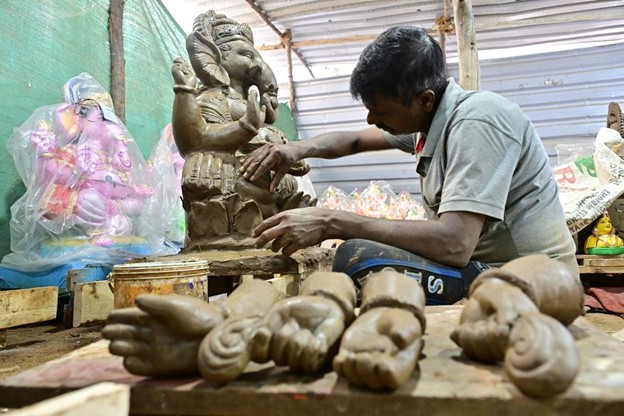With Ganesha Chaturthi fast approaching, the streets of Pottery Town, Basavanagudi, and Shivajinagar are abuzz with activity as artisans work tirelessly to meet festive demand. Yet, despite years of environmental campaigns, traditional clay idols continue to lose ground to their cheaper Plaster of Paris (POP) counterparts.
While eco-friendly clay idols cost between ₹400 and ₹750 for a one-foot idol, brightly painted POP idols are sold for as little as ₹150. The price gap, coupled with customer preference for customization, has driven many idol makers to rely on POP despite the ban.
“Clay is always valuable, but sourcing it is expensive. We bring raw clay from nearly 200 km away, costing around ₹15,000 per load,” explained Suresh B. R., a fourth-generation potter from Pottery Town. He added that large POP manufacturing units on Bengaluru’s outskirts have made competition even tougher.
Unlike POP, which can churn out 10,000 idols in a month, clay idol making is slow and laborious. “We barely manage 3,000–4,000 clay idols in a year,” said Aravindh, a sixth-generation artisan.
Retailers also admit shifting to POP idols closer to the festival, citing market demand. Authorities carry out checks, but sales continue largely unchecked. Yet, awareness is rising among younger buyers. “We prefer clay idols for their cultural and eco-friendly significance,” said Vidyavathi, a customer at Kumbara Beedi. Still, POP idols remain the first choice for many families drawn to variety, affordability, and vibrant designs.



